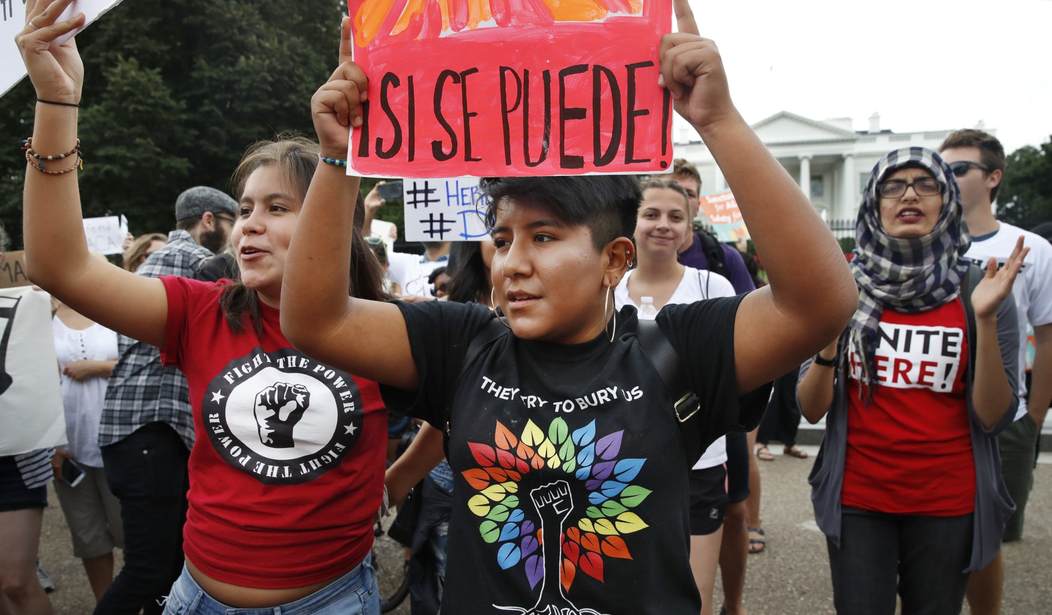President Trump’s decision to end the unlawful DACA program shows he’s a faithful defender of the Constitution and a true protector of the rule of law.
He’s also saved precious Judiciary resources. We at the Immigration Reform Law Institute been sitting on a giant legal challenge against DACA ever since the Supreme Court affirmed a lower court injunction against its near-identical sister program, DAPA. Thankfully, it’s a case we no longer have to bring.
Below is a summary of our lawsuit’s claims, which we hope serves as a reminder to the American people of the outright assault President Obama committed against the Constitution when he unilaterally decreed DACA amnesty in 2012. With its repeal, President Trump has made a giant stride in restoring constitutional order to the nation.
1. DACA conferred amnesty and federal benefits under the false pretense of “Prosecutorial Discretion.”
“Prosecutorial discretion,” insofar as it is permitted by federal immigration law, is by definition the exercise of discretion not to remove; it is not the conferral of a benefit such as work-permit.
To the limited extent that any “prosecutorial discretion” is permitted by federal immigration law, such discretion is closely detailed in the immigration statute and its underlying regulations. For instance, based an illegal alien’s “extreme hardship,” ICE can seek the cancellation or withholding of a removal. There’s also Temporary Protected Status, Humanitarian Parole, or asylum, all of which are granted based on a number of factors that have been set in statute for years.
The exercise of “prosecutorial discretion” does not permit any DHS employee or officer to grant unlawfully present aliens amnesty and work-permit benefits in the manner attempted by the DACA Directive. No doubt most anti-borders advocates know this by the simple fact that if such executive authority has always existed it would have been used before.
2. DACA expressly violated federal statutes which require the initiation of removal proceedings.
As critics warned at the time, our first experiment with mass amnesty, the Immigration Reform and Control Act of 1986, led to a giant increase in our illegal alien population far higher than before it took place. In response, President Clinton created the Commission on Immigration Reform, led by civil rights-icon Barbara Jordan, to study the issue and make recommended policy changes. The Jordan Commission’s findings formed the basis of what became true comprehensive immigration reform: the Illegal Immigration Reform and Immigrant Responsibility Act. That legislation sought to foreclose attempts by the executive to apply amnesty by fiat, which the executive had done in years previous to small groups through administrative tools such as the parole power and extended voluntary departure.
In response to the Jordan Commission’s report, Congress made it clear that those here without our authorization would be placed in removal proceedings. They amended into Title 8 of the U.S. Code section 1225(b)(2)(A), which reads “if the examining immigration officer determines that an alien seeking admission is not clearly and beyond a doubt entitled to be admitted, the alien shall be detained for a [removal] proceeding under section 1229a of this title.”
When DACA was challenged by members of an ICE public sector union in 2012, the Obama DOJ attempted to argue that “shall” in the above section actually meant “may.” Showing a respect for the English language, the judge in that case ruled that “shall” really did mean “shall” and would have struck down DACA but for jurisdictional problems.
3. DACA violated the constitutional obligation of the executive to “Take Care That The Laws Are Faithfully Executed.”
The DACA Directive ordered that our immigration laws would no longer be executed against a class of 1.7 million illegal aliens, or 15 percent of what DHS estimates to be the total illegal alien population. Such an exercise of “deferred action” to such a broad group of foreign nationals who chose to unlawfully and irresponsibly violate our sovereign borders is most certainly not consistent with a president’s duty to faithfully enforce the peoples’ democratically enacted laws.
The Take Care Clause also certainly prohibits the president from rewriting those laws under the guise of executive “discretion” or “limited resources” or because it’s simply “the right thing to do.”
And contrary to what many pro-amnesty advocates have claimed, the Take Care Clause is absolutely judicially enforceable against the president. Cases in which the Supreme Court has decided as much include Kendall v. United States and Angelus Milling Co. v. Comm’r of Internal Revenue.
4. DACA conferred a benefit without promulgating a rule.
The Administrative Procedure Act (APA) requires that all agency actions be set aside when they’re taken “without observance of procedure required by law.” Like DAPA, DHS failed to put DACA through the procedures required by the APA, namely, that it be presented to the public for notice and comment. So, not only did President Obama decide to bypass the legislative route on DACA, he bypassed the regulatory one as well.
The Justice Department would later argue in the 26-state challenge against DAPA that, with that program at least, formal rulemaking procedure wasn’t necessary because it wasn’t a substantive rule.
But DACA, like DAPA, most absolutely fulfills the APA’s definition of a substantive rule. DACA established a new class of individuals by specific eligibility criteria against whom our immigration laws requiring their removal would not be executed and who are made eligible for work permits. This makes it an agency statement of general applicability and future effect and one that’s most certainly substantive.
Strangely, then-DHS Secretary Napolitano tried to make it look as if she was going through proper procedure. Two months after DACA was announced, she issued a Federal Register Notice as part of a so-called “information collection” exercise. The gesture was likely an attempt to satisfy the APA’s publication requirements should they be sued.
Congress and the president are the peoples’ servants. We vote them in based on their campaign promises and expect them to see those promises through.
By ending DACA, that’s what President Trump has done and that’s why today he’s shown himself to be a true constitutional leader. Thank you President Trump, today you have made the Constitution great again.
Dale Wilcox is the executive director and general counsel for the Immigration Reform Law Institute.









Join the conversation as a VIP Member